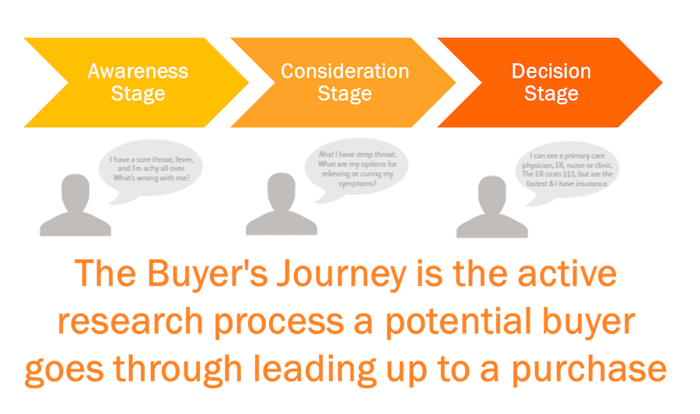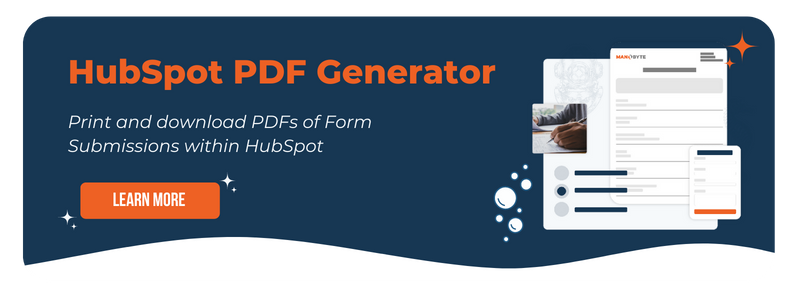
Sales prospects rarely approach a company and purchase their product or services with just a single interaction. A sales pipeline is a defined process that allows you to see how your prospects move prospects from the initial interaction with you all the way to the close of a sale. Each stage in the pipeline is based on specific actions, and your customer relationship management (CRM) solution can represent this in a more visual way for you.

The sales pipeline should reflect the buyer’s journey. Prospects will move through a pipeline at different rates based on factors such as budget and priority. Some prospects may even skip stages entirely based on when they engage a salesperson. Prospects today do more than 80% of their research before engaging with sales, so it is important to understand where there are on their journey.
Begin by having a working understanding of the stages in the buyer's journey. The typical buying journey begins with the awareness stage, in which prospects realize they have a pain point or opportunity. Prospects then define this pain point or opportunity in the consideration phase, including an evaluation of their criteria and development of potential solutions. The decision phase involves the prospect comparing available solutions.

What's a Sales Pipeline?
A sales pipeline is a sequence of actions that a sales representative takes to convert a prospect into a customer. Each step moves the prospect to the next stage in the pipeline, allowing reps to track the status of each prospect. A standard pipeline typically has the following stages:
1. Identify
2. Qualify
3. Explore
4. Advise
5. Quote
6. Close Won
7. Close Lost
Prospects are identified early on. A salesperson would connect with them to determine if they have the budget, authority, and need to purchase the products or services. A meeting between the sales representative and the prospect should include a discussion of the solution that will best meet the prospect’s requirements. The proposal occurs when the rep sends a detailed quote to the prospect regarding the sale. The closing stage includes the final negotiations and signing of contracts that turn the prospect into a customer.
What is Sales Pipeline Management?
The primary purpose of managing a sales pipeline is to estimate the revenue that will be generated by the sales opportunities currently in the pipeline. This process requires you to consider several factors such as the number of opportunities in each stage of the pipeline. You’ll also need to know the probability of an opportunity moving to the next step, the average length of the sales cycle, and the average value of each opportunity.
Sales pipeline management is particularly challenging when the data is changing rapidly, which may require you to make an informed guess. Assume for this example, that your marketing strategy is still in the process of being developed, making it difficult to predict your sales cycle. In this case, you could base your sales cycle estimate on preliminary sales figures and market research. A CRM solution can calculate these metrics for you once you accumulate more data, allowing you to compare a sales team’s current performance to that of previous time period. It can also assess the performance of individual team members to identify areas where they need improvement.
Why the Sales Pipeline is Critical to Company Growth
A sales pipeline provides several essential benefits to a company’s growth, especially the reduction of time spent on administration. An inadequate pipeline can result in sales personnel spending too much time on reporting, which can prevent them from moving their sales forward. A business may have many opportunities in the pipeline, but poor management can cause them to require more time to progress to the next stage.
A sales pipeline also allows reps to individually manage opportunities, which can be a full-time job in itself for some businesses. Continual follow-up is a key technique for keeping opportunities moving through the pipeline. For example, each sales meeting should include scheduling the next meeting.
A general overview of the sales pipeline is also essential for avoiding missed opportunities. Managers should always know enough about their open sales to adequately prioritize them, giving the highest priority to prospects who are ready to buy. These prospects are the ones who already have an approved budget for the purchase and have agreed to the sale’s terms and conditions.
How to Build a Sales Pipeline
The first step in building a sales pipeline is to estimate the probability of opportunities in each stage of your pipeline advancing to the next stage. This information will allow you to determine the number of opportunities you need at each stage to meet your revenue goals. You should then identify the characteristics that are common to the opportunities in each stage that convert, including actions required by both the sales rep and prospect. These probabilities and activities will provide the basis for your pipeline design.
Ready to Dive In?
Work with our team of Business Process experts and watch us take manual clunky systems, tech stacks, and processes and turn them into tailored, intelligent workflows that deliver business outcomes.


